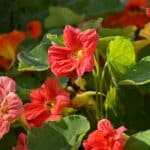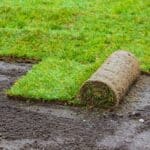Discovering your pumpkin leaves turning yellow can be disheartening, especially when you’ve invested time and effort into nurturing your garden. This common issue, however, is more than just a cosmetic concern; it’s a cry for help from your plants, signaling that something’s amiss in their environment or care routine. But don’t worry, you’re not alone in this challenge, and it’s not too late to turn things around.
Understanding the root causes of yellowing leaves is the first step toward restoring your pumpkin plants to their vibrant, healthy state. Whether it’s a nutrient deficiency, improper watering practices, or pest invasions, identifying the problem is key.
This article will guide you through the possible reasons behind the yellowing of pumpkin leaves and offer practical solutions to address each issue. Let’s embark on this journey together to ensure your pumpkins thrive, bringing you a bountiful harvest come fall.
Understanding Pumpkin Leaves Turning Yellow
When your pumpkin leaves start waving yellow flags, it’s time to play detective. This isn’t just about aesthetics—yellowing can signal some serious SOS from your plants. Let’s dive into why this happens and how you can keep your pumpkin patch thriving.
The Role of Chlorophyll in Leaf Coloration
You remember chlorophyll, right? That green pigment in plants that makes middle school science classes exciting. Well, it’s also the hero when it comes to keeping pumpkin leaves green and healthy.
Chlorophyll captures sunlight, turning it into energy through photosynthesis. When pumpkin leaves lack chlorophyll, they can’t capture sunlight effectively, leading to a yellowish appearance. This deficiency may well be due to inadequate nutrients, like nitrogen, or damage from pests and diseases, cutting short the leaf’s green glory days.
Natural Aging Process of Pumpkin Leaves
Like us, pumpkin leaves aren’t immune to aging. As pumpkin plants mature and focus their energy on fruit production, older leaves may turn yellow and drop off.
This natural cycle allows the plant to prioritize its resources, channeling energy into developing those pumpkins you’re so eagerly waiting for. However, if you notice young leaves yellowing, it’s a red flag that there’s another issue at play, separate from the natural aging process.
Understanding these key factors gives you a clearer picture of what may well be causing the yellowness in your pumpkin leaves. Armed with this knowledge, you can now proceed to troubleshoot and address the specific problems your pumpkin plants are facing.
Remember, keeping an eye on your plants and acting quickly at the first signs of trouble is your best bet for a bountiful harvest.
Common Causes of Yellowing Pumpkin Leaves

Nutrient Deficiencies
Nutrient deficiencies strike as one of the primary culprits behind your pumpkin leaves turning yellow. More precisely, nitrogen, phosphorus, and potassium shortages can lead to pale, yellow foliage.
These elements play critical roles in photosynthesis and overall plant health. You’ll want to test your soil and possibly supplement it with the right fertilizer to combat these deficiencies, bringing back the vibrant green color of your pumpkin leaves.
Water Imbalance
Too much or too little water can also stress your pumpkin plants, leading to yellow leaves. Overwatering suffocates the roots, restricting oxygen flow and mimicking the effects of drought stress.
On the flip side, underwatering leaves plants parched and unable to absorb nutrients properly. Aim for a Goldilocks watering schedule: not too much, not too little, but just right, considering the weather and soil moisture level.
Pests and Diseases
Uninvited guests like aphids, spider mites, and squash bugs can wreak havoc on pumpkin plants. These pests drain the plants of their nutrients and leave behind toxins that can cause leaves to yellow and wilt.
Diseases such as powdery mildew and bacterial wilt, spread by these pests or through other means, further contribute to the discoloration. An ounce of prevention in the form of regular inspections and proper garden hygiene can save you a pound of cure here.
Environmental Stress Factors
Sometimes, your pumpkin plants may well be throwing a yellow flag at you due to environmental stress. Extreme temperatures, too much direct sunlight, or a lack of light can all lead to yellowing leaves.
Wind can also stress pumpkin plants by causing physical damage or rapid moisture loss from the leaves. Modifying the plant environment with shade cloths during hot spells or windbreaks can help mitigate these stressors and keep your pumpkins happy and green.
Diagnosing the Yellowing of Pumpkin Leaves
Examining Leaf Patterns and Symptoms
First thing’s first, grab your detective hat because you’re going on an investigation. When pumpkin leaves start throwing a yellow fit, don’t just stand there; look closer.
Are the yellow leaves older, situated at the bottom near the soil? This could be a simple sign of age. Yes, even plants show their years.
However, if young leaves at the top are turning yellow, you may well be dealing with a nutrient issue or even pests. Check for patterns, too.
Are the leaves showing spots, stripes, or an all-over yellow hue? Spotted leaves can scream “fungus among us,” while uniform yellowing may point to thirst, either too much or too little water.
Soil Tests and Plant Analysis
Onto the dirty part, literally. Soil tests aren’t glamorous, but they are your best bet in figuring out what’s going on beneath the surface. A simple soil test can reveal if your pumpkin is starving for nutrients like nitrogen, phosphorus, or potassium.
Missing out on these essential elements is like trying to bake a cake without eggs—frustrating and fruitless.
If the test shows a deficiency, you know what to do: feed your plant what it’s craving. Also, consider sending a leaf sample for analysis if you suspect a disease. This step is like getting a blood test; it’ll tell you exactly what bug (viral, bacterial, or fungal) your plant’s fighting, allowing for a precise counterattack.
Preventive Measures and Treatments

When your pumpkin leaves start turning yellow, it’s like they’re waving a flag at you, saying, “Hey, we need a bit of help here!” Luckily, you’ve got a few options to wave back with solutions. Here’s how to tackle the issue head-on.
Balancing Soil Nutrition
First things first, let’s talk dirt. If your soil’s out of whack, your pumpkin leaves may well throw a yellow fit. A simple soil test can show if you’re missing key nutrients like nitrogen, phosphorus, or potassium.
If the test points to a deficiency, consider adding a balanced, slow-release fertilizer to the mix. Remember, though, more isn’t always better. Stick to the recommended rates to avoid nutrient burn, which can turn your yellowing issue into a bigger drama.
Proper Watering Techniques
Watering can be a bit like Goldilocks’ porridge—not too much, not too little, but just right. Pumpkins are thirsty plants, but overdoing it can lead to waterlogged roots and, you guessed it, yellow leaves.
Ensure your watering schedule accommodates for changes in weather. During hot, dry periods, your pumpkins may well need more water.
Conversely, cut back during rainy spells. A good rule of thumb is to check the soil moisture. If the top inch is dry, it’s time to water. Also, aim to water the soil directly to keep the leaves dry and happy.
Pest and Disease Control Strategies
Last but not least, let’s talk about uninvited dinner guests: pests and diseases. Aphids, spider mites, and fungal infections like powdery mildew love to feast on or infect your pumpkins, leading to those dreaded yellow leaves.
For pests, introducing beneficial insects like ladybugs can be a great, natural way to reduce their numbers. For diseases, prevention is key.
Choose disease-resistant pumpkin varieties and ensure good air circulation around your plants. If you spot early signs of disease, fungicides or insecticidal soaps can help keep them in check—just be sure to follow the application instructions closely.
In essence, keeping your pumpkin plants vibrant and green boils down to giving them a little TLC in the soil, water, and pest departments. Take these steps, and you’ll likely see those yellow flags replaced with the lush green you’re aiming for.
When Yellow Leaves Signal a Bigger Problem
Identifying Severe Diseases
Yellow leaves on your pumpkin plants can be a red flag for several severe diseases, such as powdery mildew, downy mildew, and bacterial wilt. Powdery mildew leaves a telltale white, powdery coating on leaves, while downy mildew presents as yellow spots that turn brown.
Bacterial wilt causes leaves to yellow and wilt rapidly, often leading to the entire plant’s demise. Observing these symptoms early allows for swift action to control the spread.
When to Seek Expert Help
If your pumpkins continue to struggle despite your best efforts with balanced watering, soil nutrition, and pest management, it may well be time to call in the professionals. Agricultural extension services or local gardening experts can offer advice specific to your situation.
They can perform detailed soil tests, identify pests and diseases with accuracy, and recommend targeted solutions. Don’t hesitate to reach out if your pumpkins’ health doesn’t improve; sometimes, an expert’s eye is what you need to turn things around.
Frequently Asked Questions
What causes yellowing pumpkin leaves?
Yellowing pumpkin leaves signal distress, commonly due to nutrient deficiencies, pests, improper watering, or natural leaf aging. Lack of chlorophyll often leads to yellow leaves, indicating health issues.
How can you prevent yellow leaves on pumpkin plants?
Preventing yellow leaves involves ensuring balanced soil nutrition, adopting correct watering practices, and implementing pest and disease control measures. Maintaining a healthy environment for your plants is key.
What diseases cause yellow leaves in pumpkins?
Severe diseases like powdery mildew, downy mildew, and bacterial wilt can turn pumpkin leaves yellow. These conditions require prompt attention to prevent spread and further damage.
When should you seek help for yellowing pumpkin leaves?
If your pumpkin plants continue to display yellow leaves despite your best efforts, it’s advisable to consult agricultural extension services or gardening experts. They offer tailored advice, soil testing, and specific treatment options.
See more:







